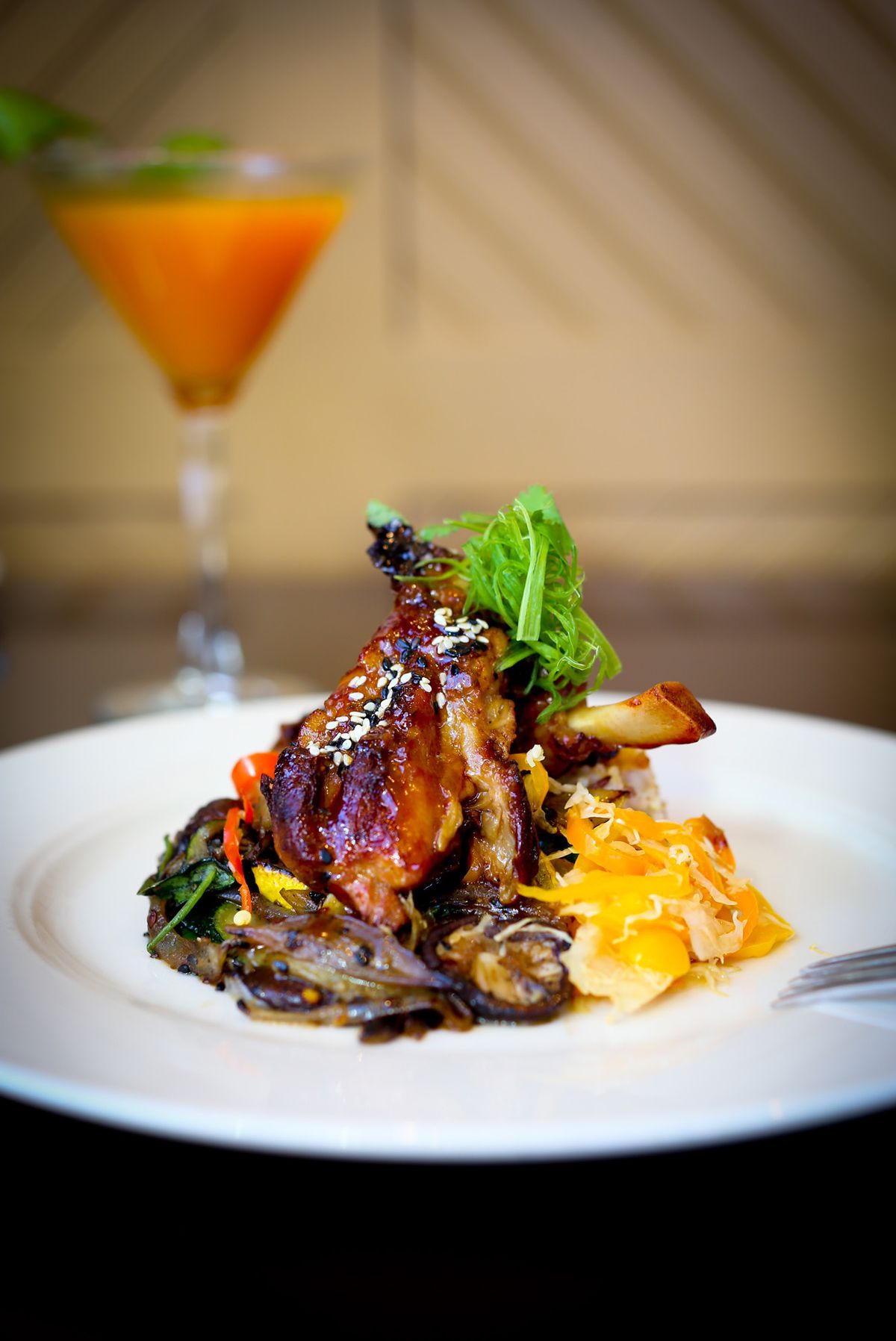Ethnic eats
Bold flavors help Korean cuisine find a home in the Inland Northwest

Meat-and-potato-loving Spokane residents are embracing the bold and unfamiliar flavors of ethnic foods. Unlike most urban cities, home to established food districts where independent grocers and restaurants specializing in a specific international cuisine reside – San Francisco’s China Town, L.A.’s Korea Town, New York’s Little Italy or even Seattle’s International District – Spokane’s smattering of ethnic fare, although present and growing, is scattered. But ethnic influences on the menus of local, nonethnic restaurants seem to be a budding trend.
One of the biggest food trends to reach our area is Korean food. While Korean cuisine has flourished for decades in bigger cities, it has just been in the past few years that it began spreading across mainstream America. Known for its spicy grilled meats and pickled vegetables, its bold pungent flavors have become all the rage with chefs and diners. Its distinctive spicy chili-bean paste, called gojuchang, is made from fermented soybeans and red chilies.
Locally, The Elk Public House added Korean Tacos to its menu, called bulgogi tacos. The Korean word bulgogi translates to “fire meat.” It’s grilled beef that has been marinated in soy sauce, sugar, sesame oil and garlic. The Elk’s tacos are filled with this flavorful marinated beef and topped with shredded cabbage, cilantro and a spicy pickled ginger sauce. It’s served with a bright cucumber kimchi, and the combination is mouthwatering.
The Korean taco trend started in Los Angeles in 2008 when Korean-American chef Roy Choi opened Kogi, a Korean taco truck specializing in tacos made with kalbi – marinated Korean short ribs – served in tortillas with various Korean condiments. This bridged the gap, bringing the authentic flavors of Korea into a format that mainstream Americans were already well familiar with – the taco. Some say the opening of Kogi ignited the food truck craze.
On the opposite coast, Korean-American chef David Chang elevated Korean food to Michelin-star levels with his N.Y.-based restaurant group, Momofuku. He quickly gained a devoted following by modernizing Korean fare, making it hip and approachable. Today, kimchi has almost become a household staple like wasabi was in the early ’90s.
Closer to home, Wild Sage American Bistro began offering Korean-style pork shanks with a kalbi barbecue glaze. Tender, sticky and fall-off-the-bone delicious, it’s served with an asparagus and mushroom sauté and a pickled chili relish. Wild Sage’s chef, Charlie Conner, also features a calamari appetizer that takes on a Korean spin with kimchi, pickled peppers and a sweet chili dipping sauce.
Santé chef-owner Jeremy Hansen adds a Korean twist to his predominantly French menu, featuring house-made kimchi on his charcuterie plate and sandwiches.
Another developing ethnic food trend, popularized by celebrity chef Anthony Bourdain, is the flavors of Vietnam. Area chefs are taking the traditional Vietnamese sandwich, called the bahn mi, and making it their own.
Chef-owner Tony Brown of Stella’s Café, a sandwich shop located a short walk north of downtown, offers a tasty version of the bahn mi. Served on French bread, soft on the inside and crispy on the outside, it’s filled with your choice of tofu or house-made pulled pork, cilantro, pickled veggies and a Sriracha aioli. It’s deliciously spicy, flavorful and addicting – it’s no surprise that it is Stella’s best-selling sandwich.
Veteran chef Merrilee Lindaman of Lindaman’s Gourmet-To-Go has been serving American comfort food to Spokane diners for almost 30 years. Through the years she has introduced her customers to ethnic ingredients by adding them to traditional American dishes. Lemongrass has found its way into meatballs, for a Vietnamese twist. Indian curry winds up a version of her pot pie. “Our customers are becoming more adventurous with what they eat,” she said, “and much more knowledgable about ingredients than they were when we first opened. Twenty years ago, no one really knew what lemongrass was. Today, everyone does.”
With ethnic ingredients becoming more readily available to area chefs, the trend will continue to grow. This, along with the multitude of television food shows bringing international food into our living rooms, and the accessibility to information about foreign ingredients via the Internet, brings global cuisine closer to us than ever before. Unexpected, exotic flavors that excite and surprise the palate are winding up on more and more of our local menus and we are happily gobbling them up.